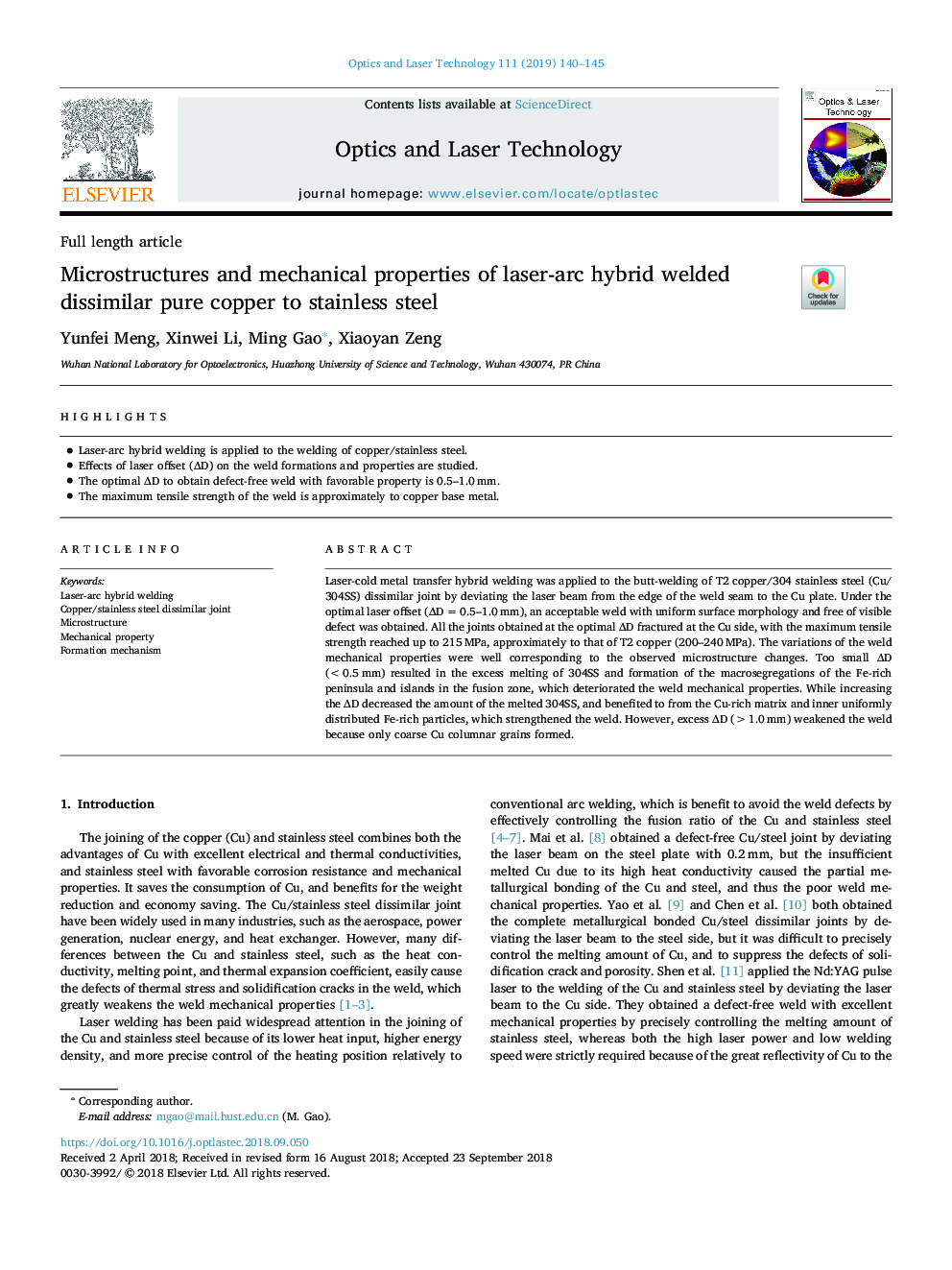| Article ID | Journal | Published Year | Pages | File Type |
|---|---|---|---|---|
| 11023615 | Optics & Laser Technology | 2019 | 6 Pages |
Abstract
Laser-cold metal transfer hybrid welding was applied to the butt-welding of T2 copper/304 stainless steel (Cu/304SS) dissimilar joint by deviating the laser beam from the edge of the weld seam to the Cu plate. Under the optimal laser offset (ÎDâ¯=â¯0.5-1.0â¯mm), an acceptable weld with uniform surface morphology and free of visible defect was obtained. All the joints obtained at the optimal ÎD fractured at the Cu side, with the maximum tensile strength reached up to 215â¯MPa, approximately to that of T2 copper (200-240â¯MPa). The variations of the weld mechanical properties were well corresponding to the observed microstructure changes. Too small ÎD (<0.5â¯mm) resulted in the excess melting of 304SS and formation of the macrosegregations of the Fe-rich peninsula and islands in the fusion zone, which deteriorated the weld mechanical properties. While increasing the ÎD decreased the amount of the melted 304SS, and benefited to from the Cu-rich matrix and inner uniformly distributed Fe-rich particles, which strengthened the weld. However, excess ÎD (>1.0â¯mm) weakened the weld because only coarse Cu columnar grains formed.
Related Topics
Physical Sciences and Engineering
Engineering
Electrical and Electronic Engineering
Authors
Yunfei Meng, Xinwei Li, Ming Gao, Xiaoyan Zeng,
